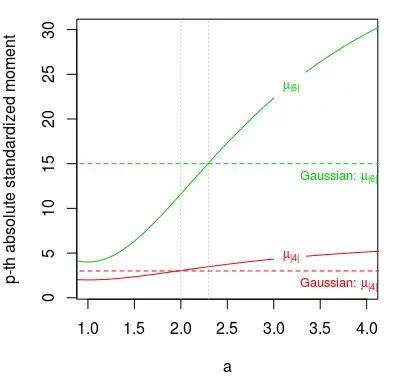The answer is no. Distributions can be differently higher/lower in relation to each other for different moments.
Example
Consider the distribution
$$f(x,a) = \begin{cases}
0.075 & \text{if} & x = -a \\
0.175 & \text{if} & x = -1 \\
0.500 & \text{if} & x = 0 \\
0.175 & \text{if} & x = 1 \\
0.075 & \text{if} & x = a \\
\end{cases}$$
Let's plot $\mu_{\vert 4 \vert}$ (the kurtosis) and $\mu_{\vert 6 \vert}$ of $f(x,a)$ as function of $a$ and compare them to the standardized moments of a Gaussian distribution.

Here we see that for $2 \lessapprox a \lessapprox 2.3$ we have that the distribution $f(x,a)$ has a higher $\mu_{\vert 4 \vert}$ but lower $\mu_{\vert 6 \vert}$, relative to a normal distribution.
